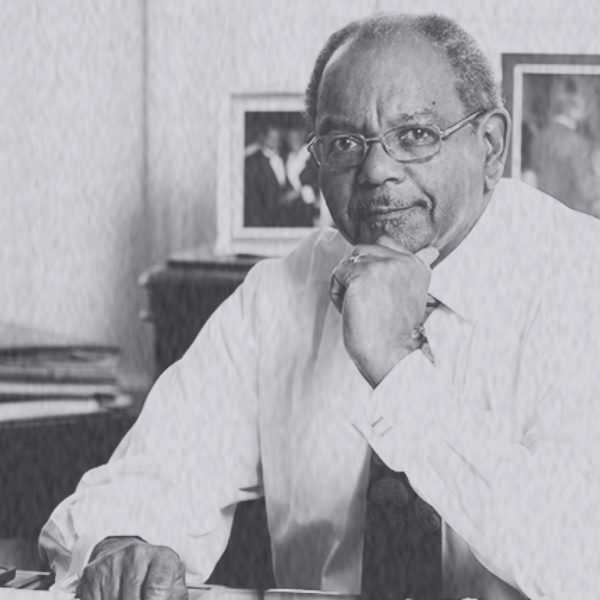Can Minority Business Owners Find Partners in Big Banks?


For years, getting loans from large financial institutions proved difficult for minority-owned firms. But recent moves may change that


Thirty-two years ago, Garbo Hearne and her husband saw a gaping hole in their Little Rock, Arkansas, community: there were no galleries that highlighted local black artists. “When my husband and I started this business, we wanted to reflect and adapt the true meaning of being ‘young, gifted, and black,’” Hearne says.
Today, Pyramid Art Books & Custom Framing and Hearne Fine Art is a national institution for African and African-American culture, literature, and art—and one that has seen a recent uptick in business as systemic racial injustice and the desire to understand the history of minorities in America have become top of mind. Over the years, Hearne has been able to expand Pyramid’s services to include both decorative and fine art, custom framing, books, art appraisals, and a budding auction business. She’s helped individuals see art not as an unattainable indulgence but as something that “changes your life when you realize that what brings you joy can be on your wall,” she says. “Art is not a luxury. It’s a necessity for mental stability.”
Getting to this point, however, hasn’t been without hardship. When Hearne and her husband, a private practice physician, were just starting out, they were denied a $10,000 line of credit from the bank and had to use their own savings. Hearne chalks it up to the fact that they “weren’t making monumental money and didn’t have enough history to show.” But 10 years later, when Pyramid wanted to expand and build, they were denied a loan. “I believe we were denied because we wanted to build in a black neighborhood and our profits were marginal,” Hearne says. “We had the same issue with building our home.”
Such tales are all too familiar for minority business owners, who have lacked access to capital for mortgages and other loans for years. A 2019 report from the Congressional Black Caucus Foundation found that 18.7% of white entrepreneurs relied on business loans from banks, while only 15.2% of Blacks did. The report also found that Black entrepreneurs are three times more likely than whites to report their business profits have been negatively impacted by access to capital.
The economic ramifications of COVID-19 have only widened the gap between success rates of white businesses and minority-owned ones. According to CNBC, from February to April, there was a 41% decline in Black-owned businesses and a 32% drop in Latinx businesses, while white-owned businesses only experienced a 17% decline. “The lack of access to capital is the single highest driver for business failure, and Black founders are less likely to gain it,” Melissa Bradley, a Georgetown McDonough School of Business professor, told CNBC.
But big banks are showing signs that they may be willing to turn the tide. After protests against the killing of George Floyd this summer, Minneapolis-based U.S. Bancorp pledged $116 million to address racial inequalities in its markets. Bank of America then pledged $1 billion over four years to address similar disparities. And in early October, JPMorganChase said it would commit $30 billion over five years to expand loans to Black and Latinx home buyers and small business owners. In a statement, CEO Jamie Dimon said, “Systemic racism is a tragic part of America’s history. We can do more and do better to break down systems that have propagated racism and widespread economic inequality, especially for Black and Latinx people. It’s long past time that society addresses racial inequities in a more tangible, meaningful way.”
JPMorganChase’s announcement came on the heels of news that Atlanta rapper and activist Killer Mike, whose real name is Mike Render, and former Atlanta mayor Andrew Young, along with others, launched a Black-owned digital bank called Greenwood, in a nod to the former prosperous Black neighborhood in Tulsa, Oklahoma, that was destroyed in 1921. Aimed at providing capital to Black and Latinx communities, Greenwood has already raised $3 million in seed funding. “Georgia is a state that’s 30% African-American,” Render told the Atlanta Journal-Constitution. “We think we deserve 30% of the state’s deposits as well.”
A HISTORY OF FINANCIAL STRUGGLE
The fact that Greenwood is just now launching is not lost on many banking experts who focus on underbanked populations. Such a struggle has been part of U.S. history since Andrew Johnson vetoed Abraham Lincoln’s creation of the Freedmen’s Bureau, which was set up to help freed slaves transition into capitalism, according to Mehrsa Baradaran, author of The Color of Money: Black Banks and the Racial Wealth Gap. While most of the bureau was eliminated by Johnson’s veto, Freedman’s Savings Bank survived. Baradaran says it wasn’t a commercial bank, but more of a “glorified piggy bank,” which “defeats the purpose of banking because the way banks create wealth is to give loans,” she said in an interview with website Make Change.
The bank wasn’t backed by the federal government (the Federal Deposit Insurance Corporation didn’t come around until the 1930s), and when the banking Panic of 1873 came about, the bank shuttered, and freed slaves lost a significant portion of deposits. That failure caused many Blacks to be leery of banks, Financial Health Network CEO Jennifer Tescher told participants at a Fortune Brainstorm Finance Community Conversation in June. Even today, 21% of Black households don’t have bank accounts, compared to only 4% of white households, according to 2016 data from the FDIC. “You have black intellectuals, black bankers, black businessmen for 100 years after the Freedman’s Bank talk about its failure, and the distrust and the bitterness it put in the community that reverberated through time,” Baradaran told Make Change.
Segregation and redlining practices brought about the creation of many Black-owned banks, primarily located in the South, where 90% of Blacks lived. But Black-owned banks are now largely a thing of the past. From 2001 to 2018 alone, the number of Black-owned financial institutions declined more than 50%, leaving only 21 Black-owned banks across the nation, according to CNBC.
GETTING HELP BEYOND BANKS
While the Small Business Administration has helped some minority business owners, there’s vast room for improvement. The percentage of SBA loans to Black small businesses declined from 8% to 3% during the Great Recession and among Hispanic business owners, lending has stayed flat around 5%. Similarly, the Minority Business Development Agency, part of the U.S. Department of Commerce, found that minority-owned firms are less likely to receive loans and more likely not to apply for them, out of fear of rejection. What’s more, when they do get loans, they receive lower loan amounts with higher interest rates. “When you look at the interest rate and the hoops and hurdles you have to jump through, I realized I should just go to a traditional bank,” Hearne says of her experience considering an SBA loan.
For many minority-owned businesses, that’s meant turning elsewhere for financial support. The Congressional Black Caucus Foundation found that Blacks relied the most on credit cards for startup capital (17.6%), compared to 10.3% of whites. About 71% of Blacks also relied heavily on personal and family resources compared to 64.5% of white business owners.
The key for minority business owners getting the necessary help from banks and elsewhere may lie in the details of community support—and, more importantly, breaking down decades of systemic racism. In a 2019 study by the National Community Reinvestment Coalition, the group sent white, Black, and Hispanic “mystery shoppers” to banks to inquire about loans. Bank personnel introduced themselves to white shoppers 18% more often than they did to Black shoppers. What’s more, Black and Hispanic shoppers were asked to provide more information than their white counterparts, particularly personal income tax statements; Hispanic shoppers were asked 32% more and Black testers 38% more frequently than their white counterparts.
As Jesse Van Tol, CEO of the coalition, told The Washington Post, the issue is “a cultural, civil rights and business problem that should be relegated to history, but instead it’s still a factor in who gets access to capital.” And until that can be reconciled, whatever lending programs banks push forward for minorities may not be sufficient.

